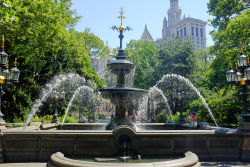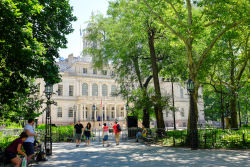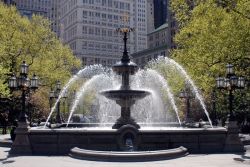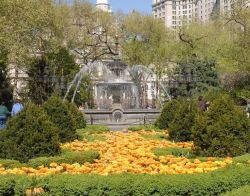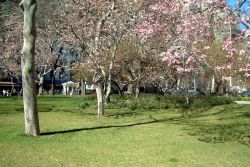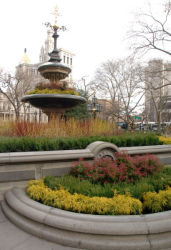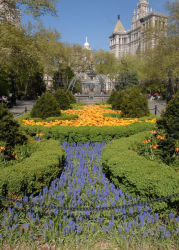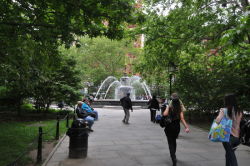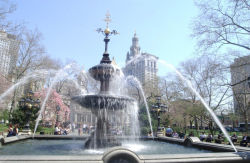City Hall Park
The Daily Plant : Friday, November 21, 2003
ASK PROFESSOR GINKGO: BUNCHES AND BUNCHES OF BENCHES
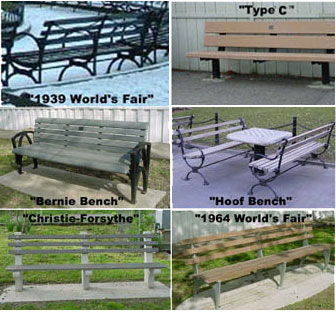
Professor Ginkgo—man of letters, member of countless learned and tree societies, and preeminent scholar of All Things Parks—has left reclusion after nearly a century to help shed light on the puzzling questions that brush the news desks at the Daily Plant. His name honors the Ginkgo Biloba tree, which is considered to be the oldest species of tree in the World and whose leaves are believed to promote strong memory and mental sharpness. If you have a fun or unusual Parks & Recreation trivia question, you can send an email to Professor Ginkgo at professor.ginkgo@parks.nyc.gov.
Dear Professor Ginkgo:
I'm interested in history of park benches, including the above. How many designs of benches does Parks & Recreation have in the NYC parks? Can I buy a bench for my yard?
There are so many varieties of length; a standard type is for two, some are eight benches together for 16, and the longest is eleven benches. How can this be so? Does it depend on the landscape of the park?
Ah, young tree, you have asked a truly great question! With a few exceptions, Parks & Recreation primarily uses six different types of benches in its parks. They are as follows: (1) the "1939 World’s Fair Bench" (also called "Type A"); (2) the "Christie Forsythe Bench" (a.k.a. "Type B"); (3) the "1964 World’s Fair Bench"; (4) the "Type C" bench; (5) the "Bernie Bench" (a.k.a. "Type D"); and (6) the "Hoof Bench."
Types A and B were both developed in the 1930s and are both based on turn-of-the-century design. Type A has a more Victorian look and can be seen in many parks, including Central Park. Type B was a favorite of Robert Moses era park design, and they were often placed together in very long rows of connecting benches. Type C, which has a black steel frame and large wooden slats, was developed in the 1980s to sustain high use and is primarily used today in sports areas. Type D, or the "Bernie Bench" is a modern design and uses plastic slats. This bench is used along boardwalks, partly because it is able to better withstand the salty air. The final bench, the "Hoof Bench" can be seen in City Hall Park and is based on an historical design.
Parks & Recreation purchases these benches from several different vendors, and they all cost relatively the same amount. Most of these benches cost about $100 per linear foot. Most benches are constructed to be between six and eight feet in length, and they can be put together in rows depending on the landscape of the park.
As you can see, benches are like birds, trees, or that new-fangled Pokemon toy my great-great-great grandchildren are always chirping about. There is such an interesting variety of benches—each with unique characteristics—and there are even some specially designed benches that aren’t so common. I suggest all my readers take a tour of the City’s parks and try to "catch them all."
QUOTATION FOR THE DAY
"A useless life is an early death."
Johann Wolfgang von Goethe
(1749-1832)
Check out your park's Vital Signs
Clean & Safe
Green & Resilient
Empowered & Engaged Users
Share your feedback or learn more about how this park is part of a
Vital Park System

